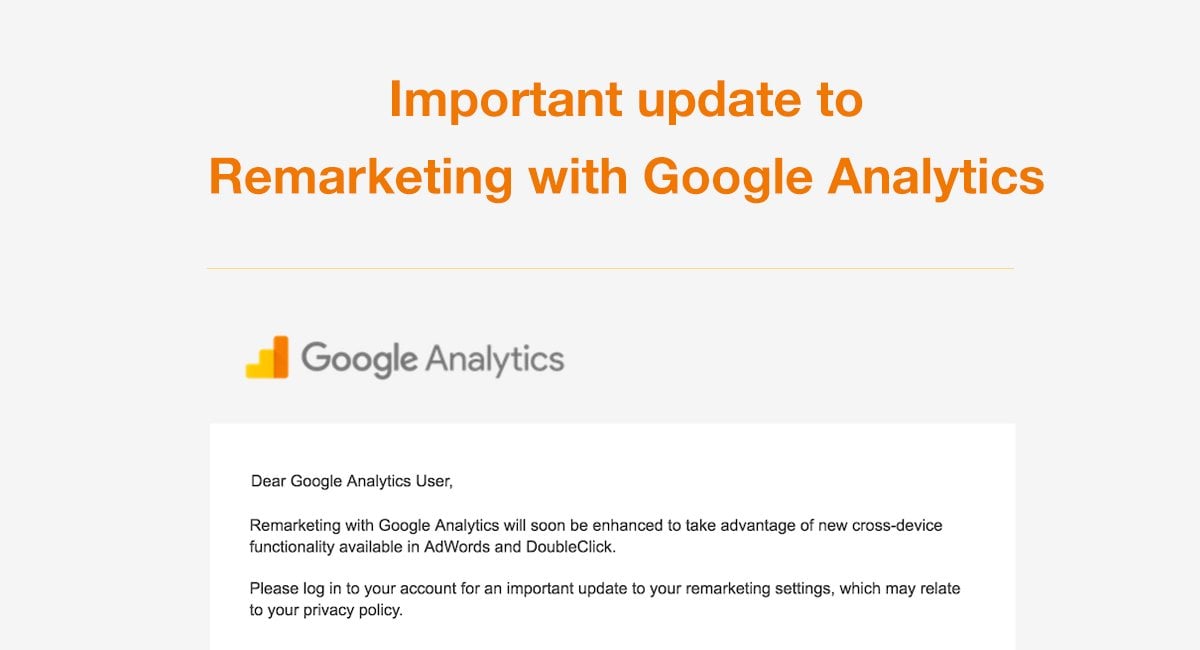Comprehending the Power of Remarketing In Google Analytics
Comprehending the Power of Remarketing In Google Analytics
Blog Article
Using Remarketing in Google Analytics: A Comprehensive Overview
Using remarketing in Google Analytics supplies organizations a critical edge in reaching out to prospective clients. The capability to target individuals who have actually currently connected with your site presents an one-of-a-kind opportunity for tailored advertising initiatives. By understanding how to craft target market checklists and deploy them successfully, businesses can dramatically enhance their conversion prices. The details of establishing up and maximizing remarketing projects need an extensive understanding of target market division and efficiency analysis. This overview will certainly drop light on the important steps associated with harnessing the full potential of remarketing in Google Analytics, leading to enhanced advertising outcomes.
Recognizing Remarketing in Google Analytics
Remarketing in Google Analytics enables organizations to strategically target customers that have formerly interacted with their internet site or mobile application. By leveraging information from Google Analytics, services can develop tailored remarketing listings based upon user actions, such as web pages seen, actions taken, or certain goals achieved. This effective tool makes it possible for organizations to re-engage with users that have actually shown passion in their services or products, ultimately boosting the likelihood of conversion.
Understanding the different sorts of remarketing techniques is crucial for a successful project - What Is “Remarketing” In Google Analytics?. Google Analytics supplies different alternatives, including conventional remarketing, vibrant remarketing, and remarketing checklists for search advertisements (RLSA) Each kind offers an unique function and can be customized to fulfill details advertising and marketing goals
Moreover, assessing the efficiency of remarketing campaigns is essential for maximizing results. Google Analytics offers important insights into the effectiveness of various remarketing methods, enabling companies to make data-driven choices and refine their targeting strategy. By continuously checking and readjusting remarketing efforts based on analytics data, businesses can make best use of ROI and drive success in their advertising and marketing campaigns.
Establishing Up Remarketing Projects

After establishing audience listings, the following step is to connect Google Analytics with Google Advertisements. By linking these two systems, companies can effortlessly move target market listings from Google Analytics to Google Ads for remarketing functions. This integration enables more exact targeting and better project efficiency.
Once the accounts are linked, businesses can develop remarketing campaigns in Google Ads making use of the target market lists previously specified in Google Analytics. These projects can be personalized with certain ad creatives, messaging, and bidding approaches to successfully re-engage with previous visitors and drive conversions. By complying with these actions, businesses can leverage the power of remarketing to boost their marketing efforts and raise ROI.
Making Use Of Target Market Segmentation Techniques

Predefined sectors in Google Analytics permit you to promptly evaluate typical target market classifications like new individuals, returning individuals, or customers that finished a particular goal on your web site. Customized sections, on the various other hand, enable you to develop special sections based upon specific criteria that are necessary to your business goals. Dynamic remarketing listings instantly change based on user habits, revealing personalized advertisements to customers that have interacted with your site specifically methods.
Analyzing Remarketing Efficiency Metrics
Upon assessing the effectiveness of remarketing campaigns in Google Analytics, the analysis of key performance metrics gives valuable understandings into target market interaction and conversion prices. By delving into metrics such as click-through prices (CTR), conversion prices, cost per acquisition (CPA), and return on ad invest (ROAS), online marketers can assess the success of their remarketing informative post efforts. Assessing these metrics enables online marketers to enhance campaigns, fine-tune target market targeting, and allot budget plans successfully to enhance general remarketing efficiency.
Optimizing Remarketing Approaches
When refining remarketing strategies in Google Analytics, concentrating on target market division is paramount for accomplishing project success. By dividing your target market right into details sections based on their actions, demographics, or rate of interests, you can customize your advertisements better per team. This targeted approach raises the possibility of engaging individuals who have already shown rate of interest in your solutions or products, bring about greater conversion prices.
An additional critical facet of optimizing remarketing strategies is continually testing and refining your projects (What Is “Remarketing” In Google Analytics?). A/B screening different advertisement creatives, messaging, or offers can help you recognize what resonates best with your audience and drives one of the most conversions. By analyzing the performance of these tests in Google Analytics, you can make data-driven choices to maximize your remarketing efforts better
Additionally, leveraging dynamic remarketing can considerably boost your project results. This attribute permits you to show tailored ads to users based on their previous interactions with your website, showcasing product and services they have previously viewed. By supplying customized material to users based upon their habits and interests, vibrant remarketing can assist raise involvement and drive conversions.
Conclusion
To conclude, taking advantage of remarketing in Google Analytics is a tactical technique to target users who have actually previously involved with an internet site. By developing personalized audience checklists and utilizing target market division approaches, organizations can maximize remarketing projects for enhanced conversion rates. Analyzing efficiency metrics and continuously enhancing strategies are crucial for taking full advantage of the performance of remarketing initiatives.
Google Analytics provides numerous choices, including typical remarketing, vibrant remarketing, and remarketing checklists for search ads (RLSA)After establishing up target market checklists, the following step is to connect Google Analytics with Google Advertisements. By linking these 2 systems, companies can flawlessly transfer audience lists from Google Analytics to Google Advertisements for remarketing objectives.When the accounts are connected, companies can develop remarketing campaigns in Google Ads utilizing the target market notes formerly defined in Google Analytics.When refining remarketing approaches in Google Analytics, focusing on audience division is extremely important for accomplishing project success.
Report this page